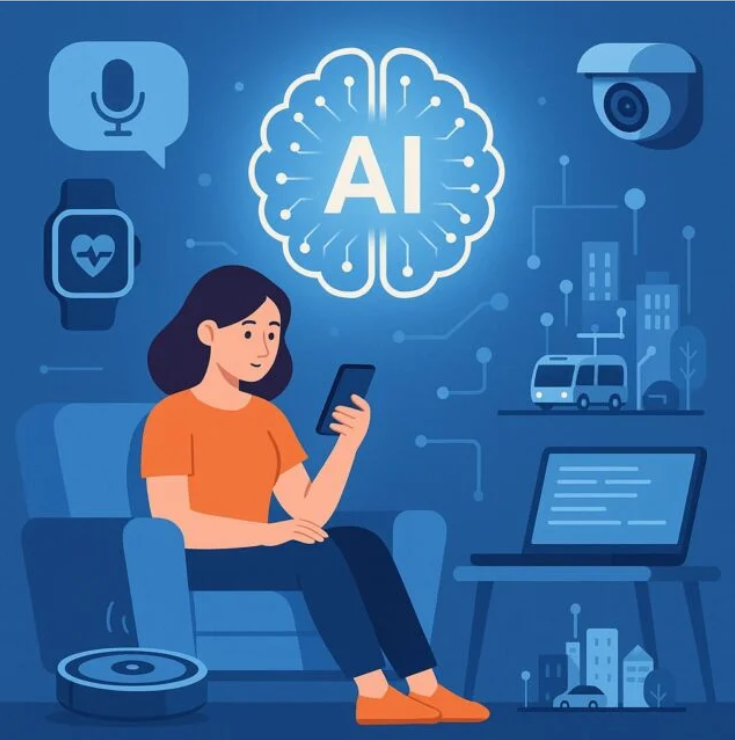The Rise of AI in Everyday Life: More Than Just a Smart Assistant
Artificial Intelligence (AI) is no longer a concept from science fiction movies or research labs. Today, it has become part of our daily lives—sometimes in ways we don’t even notice. From smart devices in our homes to personalized recommendations online, AI in everyday life is shaping how we live, work, and connect. According to PwC, AI could contribute $15.7 trillion to the global economy by 2030, making it one of the most transformative technologies of our time.
The Smart Home: Your AI-Powered Sanctuary
One of the clearest examples of AI in everyday life is the smart home.
Smart speakers like Amazon Alexa and Google Nest have become household staples. In fact, a Statista report shows that over 320 million smart speakers were in use globally by 2023.
Smart thermostats such as Nest or Ecobee learn your heating and cooling patterns, helping reduce energy bills by up to 10–15% annually.
AI-powered security cameras can now detect humans, pets, or even package deliveries, reducing false alerts.
Smart lighting systems like Philips Hue automatically adjust brightness and color to match your daily routines.
The result? Homes that don’t just respond—they anticipate your needs.
The Digital World: Content and Commerce Powered by AI
Beyond our homes, AI is transforming how we consume content and shop online.
Streaming platforms like Netflix and YouTube use AI to recommend shows and videos. Netflix estimates that 80% of what people watch comes from its recommendation engine.
E-commerce giants like Amazon use AI to suggest products, analyze buying behavior, and even manage supply chains. According to McKinsey, personalization powered by AI can increase sales by up to 10%.
Search engines like Google rely heavily on AI algorithms such as RankBrain to deliver the most relevant results out of billions of web pages.
This invisible layer of AI makes the digital experience faster, more relevant, and more intuitive.
The Mobile Revolution: AI in Your Pocket
Your smartphone is perhaps the most powerful AI tool you carry every day.
Facial recognition technology now secures over 1 billion Apple devices worldwide.
Predictive text and autocorrect save users countless keystrokes daily by anticipating what they’ll type next.
AI-powered smartphone cameras—like those in iPhones and Google Pixels—enhance photos by detecting scenes, adjusting lighting, and reducing noise automatically.
Voice assistants like Siri or Google Assistant integrate with apps, calendars, and navigation, making phones personalized digital companions.
AI in mobile devices shows how technology adapts to us—not the other way around.
Looking Ahead: The Future of AI in Everyday Life
AI is still in its early stages, but its role will only grow.
Healthcare: AI can detect diseases earlier than doctors in some cases. For example, Google’s AI system for breast cancer detection achieved an 11.5% improvement in accuracy compared to human radiologists.
Transportation: Self-driving technology is advancing rapidly. Tesla, Waymo, and other companies are testing autonomous vehicles, aiming to reduce accidents caused by human error (which accounts for 94% of crashes in the U.S.).
Education: Platforms like Duolingo use AI to personalize lessons. By 2030, AI in education is expected to become a $25 billion global industry.
Workplace: AI-driven automation could handle up to 30% of repetitive tasks in many industries, freeing workers for more creative and strategic roles.
The goal of AI is not to replace humans, but to augment human intelligence, making life more efficient and productive.
Conclusion


